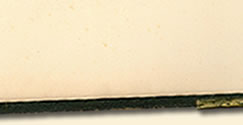










|
|||||||||||||||||||||||||||||||||||||||||||||||||||||||||||||||||||||||||||||||||||||||
|
Dennis Gabor (in Hungarian: Gábor Dénes) was born as the first child of Bernát Günszberg and Adél Jakobovits on 5 June 1900. (The father changed the family name to Gabor when the permission was granted to him in 1902.) He began his studies at the Szemere Street Elementary School and then he attended the Markó Street High School in the fifth district, which was among the best schools in Budapest in those times. Here studied Donát Bánki, who later became the professor of the Budapest University of Technology and Economics, the painter István Szőnyi, and the writer Frigyes Karinthy as well. Here spent his training years as a teacher Géza Zemplén, who was later a famous professor in Chemistry at the Budapest University of Technology. His class-mate was László József Bíró, who invented the ball pen. Gabor, the junior president of the Society of Mathematics and Natural Sciences of the school attended the Faculty of Mechanic Engineering of the Royal Technical Joseph University (today known as the Budapest University of Technology and Economics). József Kürschák, Ödön K. Jónás, Sándor Rejtő, Ignác Pfeifer and Imre Szarvasy were his professors. Dennis Gabor continued his studies at the Technische Hochschule, Charlottenburg, now known as the Technical University of Berlin, where he obtained MA degree in 1924 and later a PhD. Dennis began working as a research engineer at the Physics Laboratory of Siemens and Halske Co. where he designed high-tension lines and began to pay special attention to electron optics. In 1933 he returned to Hungary and continued his research at the Tungsram Electron Tube Research Institute in Budapest. He strengthened his links with Mihály Polányi, Pál Selényi and Imre Bródy. In the institute he worked successfully on his new invention, the plasma lamp. In 1934 he was already working in Great Britain; the results of his research were summarized in his book, The Electron microscope, which was published in two editions. Between 1947 and 1958 Gabor taught Electron Physics at the Imperial College in London. In 1952 he already had a precise conception on a flat television tube – in black and white and in colour versions. In the meantime his interest turned toward a new subject: holography. “I call the diffraction diagram “hologram”, because it containes “holos”, the whole information.” According to the correspondence and discussions with several researchers such as Selényi and Greguss, he began to systematize this question in 1947. He became the Honorary Member of the Hungarian Academy of Sciences in 1964. He received the Nobel Prize in Physics in 1971 “for his invention and development of the holographic method". He played an active role in the realisation of the objectives of the Club of Rome. He returned several times to Hungary. His thought, “Inventing the future” gained many followers. He continued to maintain his relationships even in his illness. In 1977 he visited the Museum of Holography in New York where his membership was no. 1. His life came to an end on 9 February 1979. |

